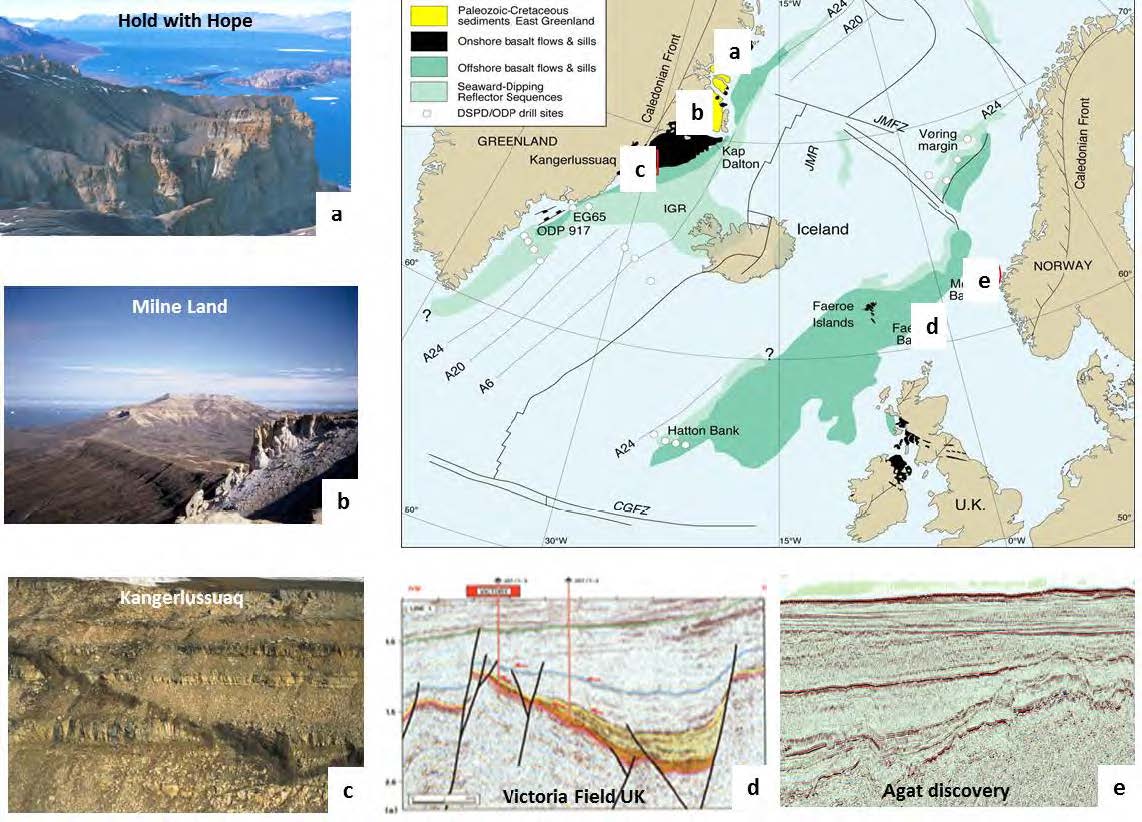Lower Cretaceous clastic wedges have been a successful play in the UK continental shelf (e.g.Moray Firth area). Only technical discoveries have been found in Post Valanginian Pre-Cenomanian units on the Norwegian North Sea Shelf and in the Norwegian Sea (see figure below). The majority of these discoveries have in addition been incidentally proven by drilling established Jurassic plays. Lack of economic discoveries is related to poor reservoir quality and insufficient trapping mechanism. On the contrary, mapped traps of Lower Cretaceous clastic wedges along the master faults or internal basin highs have been a target in the south-western Barents Sea where gas and oil technical discoveries have been proven as a valid play model. Here both deltaic/shoreline and submarine gravity flows have shown prolific sandstone bodies (see figure below).
Even with some tested plays we claim that the Lower Cretaceous clastic wedges remain an under-explored play along the basin margins of the Norwegian Sea and the Barents Sea as most of the past and present focus has been into Jurassic and Triassic targets.

Figure showing examples of clastic wedges in the North Atlantic realm. a) 150m thick Albian shoreline and tidal deposited sandstone unit b) 200m thick unit of Valanginian to Hauterivian Shoreline to coastal plain deposited sandstones, c) 150m thick Aptian to Albian fluvial to estuarine deposited sandstones, d) Interpreted seismic section of the Victoria Field UK with Lower Cretaceous shallow marine sandstones as reservoir. e) East west seismic line (east to the right) showing Aptian Albian gravity (slope apron fan) as reservoir in the Agat gas discovery in west, down flank of Hauterivian shallow marine sandstone on the high to the east. All photos by M. Larsen. Map from Larsen & Olaussen ( 2004).


